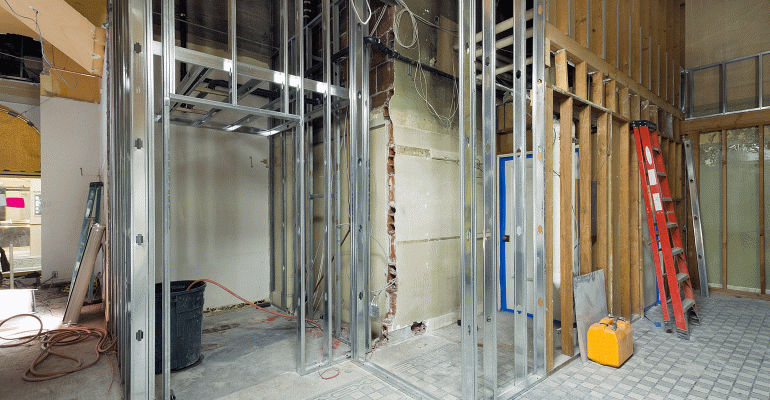 Bob Donofrio is senior vice president of consulting solutions for Revenue Management Solutions. This article does not necessarily reflect the opinions of the editors or management of Nation’s Restaurant News.
Bob Donofrio is senior vice president of consulting solutions for Revenue Management Solutions. This article does not necessarily reflect the opinions of the editors or management of Nation’s Restaurant News.
So, you’ve decided to remodel a restaurant location.
Beyond questions about design, budget and contractors, you are undoubtedly thinking about some customer-related questions:
Will your longtime customers like the new look and keep coming back? Will the remodel attract new customers? And, just as important, will customers be willing to pay higher menu prices if you spruce the place up?
The good news is that with proper planning and a deep understanding of your customers, a remodel can help you fine-tune your image in a profitable way. And with smart menu pricing decisions, you can offset the costs of the work over time without hurting customer traffic.
Analysis has shown that customer price sensitivity generally decreases when guests are enjoying an updated restaurant environment.
Customers place added value on a sleeker experience. When you improve the restaurant with an updated design and features such as flat-screen TVs, mobile charging stations and Wi-Fi, the customer experience is transformed. In turn, the customer will be more willing to pay for the added benefits.
How much you choose to raise prices should depend on the extent of the redesign. Simply sprucing up the interior or painting the exterior may not support a significant increase in the pricing structure. However, a complete rebuild at the same location probably will. Also, consider that added efficiencies like an additional register or drive-thru lane will result in more throughput, another way to boost profitability.
Here are some things to keep in mind to make sure your remodel is profitable in the long term:
1. Determine your expectations for return on investment and revisit menu pricing before you reopen. A remodel is a big investment on many fronts. Before you start, it’s important to plan for recouping the expenditures and to be realistic about how long it may take.
Also, as you estimate the return on investment, consider lease terms, lost revenue (should you need to stop operating during the remodel), and whether partnership dollars will be available to cover some of the cost.
The ROI analysis needs to include updated menu pricing in the equation, so when it comes to adjusting menu prices, this should be determined while the remodel is underway, not after reopening.
2. Be mindful of the “decay rate” when it comes to pricing. The “decay rate” is the diminishing opportunity to raise menu prices as a result of a change in customer perception. The rate of decay depends on location, the brand and the extent of the remodel, but your opportunity to make significant menu price changes will generally decline every day after reopening.
As previously mentioned, the goal should be to have new menu prices set for the day you reopen. This is especially true if the restaurant has been closed for a while, since customers tend to forget previous menu prices.
3. Use your demographic and transactional data to reset menu prices. If you don’t have a deep understanding of your customer, changing menu prices could be disastrous to profitability.
First, it’s important to have a clear understanding of customer demographics and income levels in the location’s trade area. As you look at this, consider how close your competitors are to your location.
But, just as important, understand what your customers are willing to pay for each item. An analysis of transactional data can tell you which menu items have low sensitivity to a price change, along with which items trade with more profitable items. This type of data-driven insight allows you to increase profit per transaction.
4. Realize that a remodel creates a special opportunity for your business. In some cases, you can attract customers who never would have considered your location before. You can also potentially bring back one-time visitors who didn’t feel the previous experience matched what they were looking for.
To help win these people over, consider an investment in doing more training with your employees to match this new experience with exceptional service. The value of a visit is based on the entire experience — the aesthetics, the technology and the service. If you increase the value of a visit, customers are willing to pay a higher price, and they’ll come back.
5. Do a remodel when the restaurant is doing well. The best time for a refresh is typically when your restaurant is doing well. An old saying goes: “Don’t wait until it’s raining to fix your umbrella.” So don’t wait until your location is in trouble. Rather, make improvements when it’s performing well.
Nothing is as impactful to same-store sales as a remodel that is done properly. If your location is viable, you can attract and retain customers with a remodel, leading to same-store sales improvement over the long term. Assuming, of course, it’s done in a thoughtful way supported by data.
Bob Donofrio, SVP of consulting services for Revenue Management Solutions, holds an MBA from the University of South Florida and has been with the company since 2004. During that time, he and his team have assisted thousands of franchisees across North America in optimizing their gross profit.

